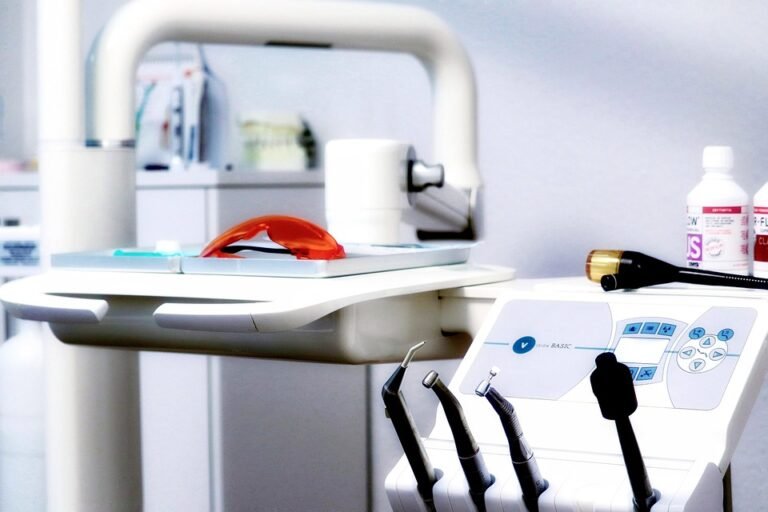How does the cost of online dental education compare to traditional dental education?
Okay, so I’m really considering dental school, but the tuition prices I’m seeing are terrifying! I keep hearing about some universities offering online dental education programs, at least for some parts of the curriculum. I know you still need in-person clinical experience, obviously.
My main question is about the overall cost difference. I’m wondering if an online program, even one with mandatory in-person clinicals, would be significantly cheaper than going to a traditional dental school. Things like:
- Tuition fees: Are online tuition rates generally lower?
- Living expenses: Would I save money by attending online courses since I might be able to live at home longer or in a cheaper area, especially during the pre-clinical years?
- Travel costs: How much extra might I be spending on travel to the clinical sites if they’re further away than a local dental school? Would that eat into any potential savings?
- Materials/Equipment: Is there a difference in the cost of dental materials and equipment needed for online vs. traditional programs?
- Hidden costs: Are there any unexpected costs I should be aware of with online dental education that I might not encounter with a traditional program?
Basically, I’m trying to figure out if the potential savings are worth the possible downsides of a partially or fully online dental education. Has anyone looked into this and can share their findings? Are there any specific programs (even hypothetical ones) I can research to compare cost breakdowns? Thanks!
Answer
The cost comparison between online and traditional dental education is complex and not easily summarized, as it depends heavily on what aspects of "online dental education" are being considered. Currently, a fully online dental degree program granting a Doctor of Dental Surgery (DDS) or Doctor of Dental Medicine (DMD) degree does not exist in the United States or Canada and is extremely rare globally. Therefore, a direct comparison of the total cost of tuition and fees for a fully online DDS/DMD program versus a traditional one is impossible.
However, certain aspects of dental education can be delivered online or in a hybrid format, potentially influencing costs in various ways. Here’s a breakdown:
Traditional Dental Education Costs:
- Tuition and Fees: This constitutes the largest expense. For a four-year DDS/DMD program in the U.S., tuition and fees can range widely. Public, in-state dental schools are generally less expensive than private institutions. As of 2023-2024, annual tuition at public dental schools for in-state residents could range from approximately \$25,000 to \$60,000 or more. Private dental school tuition could range from \$50,000 to \$100,000+ annually. These figures are approximate and vary substantially. Over four years, this can amount to \$100,000 to \$400,000+ in tuition alone. Mandatory fees for technology, student services, and other expenses add to this cost.
- Living Expenses: Dental school is a full-time commitment. Students often live near campus, incurring costs for rent, utilities, food, transportation, and personal expenses. These costs vary depending on the location of the dental school. Urban areas typically have higher living expenses than smaller towns. Annually, living expenses can range from \$20,000 to \$40,000 or higher, depending on location and lifestyle. Over four years, this contributes significantly to the overall cost.
- Books and Supplies: Dental students require specialized textbooks, instruments, lab coats, and other supplies. These materials can be expensive, potentially costing several thousand dollars per year.
- Equipment: During clinical training, students need to purchase or rent dental equipment and instruments. This can be a significant one-time expense, potentially amounting to several thousand dollars. Some schools may include equipment costs in tuition or offer equipment rental programs.
- Board Examination Fees: Students must pay fees to take the National Board Dental Examinations (NBDE) or the Integrated National Board Dental Examination (INBDE) and regional/state clinical examinations to become licensed dentists. These fees can add up to several thousand dollars.
- Professional Organization Dues: Many students join professional organizations like the American Student Dental Association (ASDA), incurring membership fees.
- Interest on Loans: Most dental students rely on student loans to finance their education. The interest accrued on these loans over the repayment period can substantially increase the total cost of dental education. The interest rate and repayment period influence the total interest paid.
Potential Cost Implications of Online or Hybrid Learning in Dental Education:
While a fully online DDS/DMD is not available, online or hybrid components may affect costs in specific areas:
- Reduced On-Campus Time: If a portion of the didactic coursework is delivered online, students may have the potential to save on some living expenses, such as commuting costs, or by living further from campus if attendance is not required daily. This potential saving is limited and may not be significant, as clinical training requires substantial in-person time.
- Digital Textbooks and Resources: Some schools are incorporating digital textbooks and online resources, which may be less expensive than traditional print textbooks. However, the cost savings may not be substantial, and some textbooks may still be required in print.
- Virtual Reality (VR) or Simulation Training: Some dental schools are using VR or simulation technology for preclinical training. While the initial investment in these technologies is high for the institution, it could potentially lead to cost savings for students in the long run by reducing the need for certain physical materials or cadaver labs. However, this cost reduction is not guaranteed and may be offset by technology fees.
- Online Continuing Education: Many dentists use online continuing education (CE) courses to fulfill licensing requirements. These courses are typically less expensive than attending in-person CE conferences, saving on travel, accommodation, and registration fees. However, this is relevant after completing dental school and obtaining a license.
- Asynchronous Learning: Online components allow students to learn at their own pace, which could potentially reduce the need for tutoring or supplemental instruction. However, this depends on the student’s learning style and the availability of support resources.
- Increased Access and Reduced Relocation Costs (Hypothetical): In a hypothetical scenario where more dental education becomes accessible online, it could potentially reduce the need for students to relocate to attend dental school, saving on moving expenses and long-term living costs in a new location. However, as noted, this is currently not a reality.
Important Considerations:
- Clinical Training: A significant portion of dental education involves hands-on clinical training, which cannot be effectively delivered online. Students need to work with patients under the supervision of experienced faculty. This remains a core requirement of all accredited dental programs.
- Accreditation: It is crucial to attend an accredited dental school to be eligible for licensure. Any program claiming to be a fully online DDS/DMD program should be scrutinized carefully for accreditation status.
- Quality of Education: The quality of online or hybrid dental education components is critical. Schools must ensure that online learning is engaging, interactive, and effectively delivers the necessary knowledge and skills.
- Hidden Costs: Online learning may involve hidden costs, such as upgrading computer equipment, purchasing software, or subscribing to internet services.
Conclusion:
While some aspects of dental education may incorporate online or hybrid learning, a fully online DDS/DMD program is currently unavailable and unlikely to be a cost-effective option in the near future, considering the essential need for in-person clinical training. The potential cost savings from online components are limited and may be offset by other expenses. Traditional dental education remains the standard pathway to becoming a licensed dentist, and its costs are substantial. The specific costs vary depending on the institution, location, and individual circumstances.



